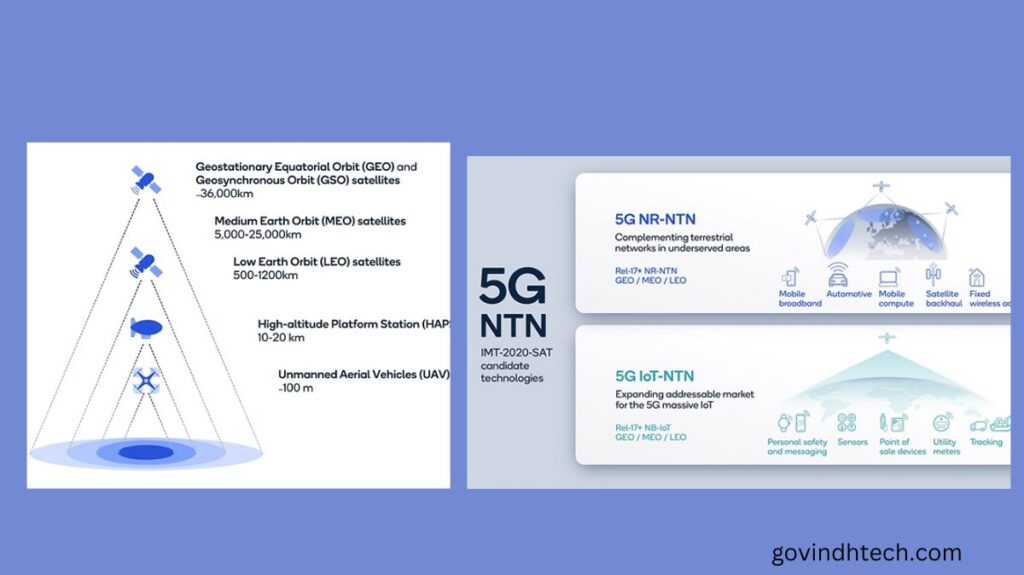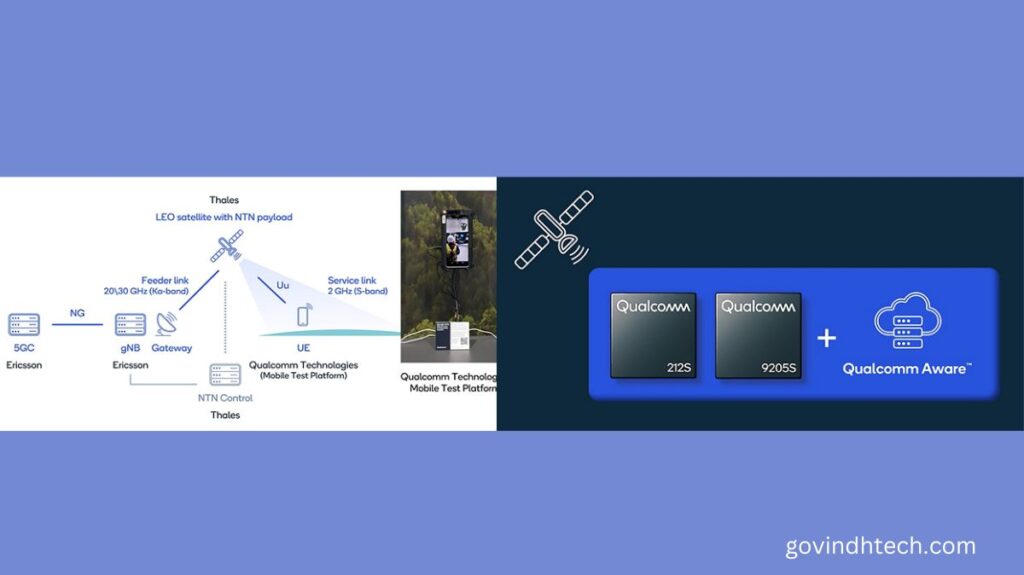Space-based 5G: The final frontier for global connectivity
Could universal broadband be the 5G killer app we’ve been waiting for?
Terrestrial cellular networks’ lack of coverage can affect industry, business, and even individual safety when they need connectivity. 5G from space might make Internet connectivity universal for many use applications.
Qualcomm’s satellite communications innovation legacy
Qualcomm and Loral Corporation introduced Globalstar in 1991 after the 1988 success of OmniTRACS, a two way satellite mobile communications system for trucking and logistical organisations. Globalstar used CDMA technology and 48 low-earth-orbit (LEO) satellites to give global coverage to a wide range of devices.
Modern multi-mode satellite phones use various technology for terrestrial and proprietary satellite connectivity and are non-mainstream.
Qualcomm recognised the opportunity to improve the smartphone experience by combining terrestrial and satellite communication with one mass-adoption technical standard. This conviction led us to reorient 3GPP’s 5G standardisation effort towards satellite connectivity. Qualcomm Technologies spearheaded 5G Release 17 satellite communications R&D and continues to advance 5G Advanced satellite connection for end user devices and IoT.

3GPP Release 17: 5G Non-Terrestrial Networking begins
3GPP pursued a variety of 5G non-terrestrial networking (NTN) solutions for Release 17 based on platform type and use cases. HAPS, UAVs, and satellites in GEO/GSO, MEO, and LEO orbits are supported. Some platforms are immobile with non-steerable coverage, while others can move or have steerable coverage. Thus, Release 17 supports earth-fixed and earth-moving coverage beams.
Release 17 addresses the main issues with 5G connectivity with non-terrestrial platforms: extended propagation delays, moving cells, and big Doppler shifts from high-speed platforms. IMT-2020-Satellite candidate technologies IoT-NTN and NR-NTN offer these solutions in two 5G technologies for various use cases in Release 17.
5-G NR-NTN complements terrestrial networks in underserved areas including as rural areas and coverage gaps. While providing less capacity and data rates than a densely deployed terrestrial network, 5G NTN enables a ubiquitous 5G user experience with mobility between terrestrial and non-terrestrial coverage.
Rel-17 5G NR-NTN uses transparent bent-pipe satellites and the 5G Standalone (5G SA) architecture with a 5G gNB and 5GC core network to offer throughputs of 1 to 10 Mbps, or higher with extra spectrum. SMS, VoNR, and mobile broadband to smartphones and embedded devices, fixed wireless access, automotive and mobile compute connection, and satellite backhaul for faraway cell towers are 5G NR-NTN use cases.
5G IoT-NTN seeks to grow the vast IoT industry with non-terrestrial coverage. In transparent bent-pipe mode, satellites deliver 1–100 kbps to Rel-17 NB-IoT and eMTC devices. The bent-pipe architecture allows rapid deployment of new services over existing satellites for lower bandwidth services like NB-IoT by upgrading only the ground station and user device.
Base stations connected to ground stations and EPC core networks generate NB-IoT or eMTC carriers. Personal safety and messaging, environmental sensors, POS devices, utility metres, and logistics tracking are 5G IoT-NTN use cases. In isolated rural regions, shipping containers at sea, and other areas where terrestrial networks are not available, IoT-NTN can provide universal coverage for IoT devices.
3GPP Release 17 selected two radio channels for 5G NTN use, pending regional regulatory permissions. The L-band (1626.5-1660.5 MHz UL / 1525-1559 MHz DL) has 34+34 MHz FDD bandwidth, while the S-band (1980-2010 MHz UL / 2170-2200 MHz DL) has 30+30 MHz FDD bandwidth.
Mobile IoT-NTN and NR-NTN devices must enable GNSS location to pre-compensate for propagation delays and motion-related Doppler effects when communicating via satellite. Stationary devices can operate without GNSS if their location is accurately specified.
3GPP ecosystem grows to enable 5G NTN
Many satellite industry leaders have joined the 3GPP due to 5G’s vast capabilities and global scope. Airbus, CNES, ESA, Eutelsat, Hispasat, Hughes, Inmarsat, Intelsat, KT Sat, Leonardo, Lockheed Martin, and Thales are collaborating with 3GPP’s cellular ecosystem to develop 5G satellite communications (satcom).
Qualcomm, Ericsson, and Thales researched, tested, and validated 5G NTN. This partnership produced a revolutionary on-the-ground end-to-end solution for the 5G NR-NTN vision, including emulators for realistic NTN channels’ radio propagation and time delays. Qualcomm Technologies‘ mobile test platform (MTP) validated the 5G NTN smartphone form-factor, Thales’ 5G radio satellite payload for LEO satellites, and Ericsson’s 5G vRAN prototype and core network. The successful live demonstration of this system at MWC Barcelona 2023 was a key step towards commercialising 5G NR-NTN.
Qualcomm Technologies and Skylo, a 5G NTN service provider, unveiled new 5G IoT-NTN modems that allow ultra-low power and improved connectivity for IoT devices across satellite and cellular networks. Qualcomm Aware enables real-time asset tracking and device management in remote places for essential decision-making on both chipsets.

5G Advanced: NTN app and performance improvements
As part of the 5G development programme, 5G Advanced will refine 5G NTN starting with 3GPP Release 18 (mid-2024). For Release 18, systemic improvements include control channel and reference signal enhancements, discontinuous coverage support, higher performance with very small aperture terminals (VSAT), and service continuity and mobility improvements for better transitions between non-terrestrial and terrestrial coverage areas.
Rel-18 5G NR-NTN will support NTN frequency ranges above 10 GHz, such as the Ka band, for larger carrier bandwidths and network capabilities. The US FCC will consider bands n510 (27.5-28.35 GHz UL / 17.7-20.2 GHz DL) and n511 (28.35-30.0 GHz UL / 17.7-20.2 GHz DL). For the EU, CEPT will propose band n512 (27.5-30.0 GHz UL / 17.7-20.2 GHz DL). Note that these additional bands target VSATs and other devices with larger antennas or arrays, not smartphones.
In positioning, the 3GPP is working to reduce GNSS dependence for NTN use cases and add network verification of device location with multi-RTT measurements.
Developing satellite communications for commercial success
Previous attempts to bring satellite communications to the masses lacked a single technology standard that could help mobile network operators and satellite connectivity service providers worldwide complement each other’s networks for ubiquitous connectivity with affordable and popular devices. The 3GPP ecosystem’s momentum, the 3GPP technology evolution plan, and 5G NTN’s vast application cases can only help the value proposition succeed commercially.


